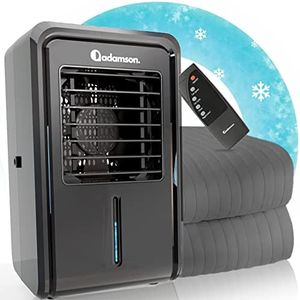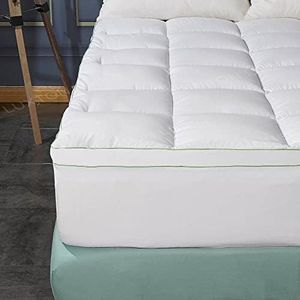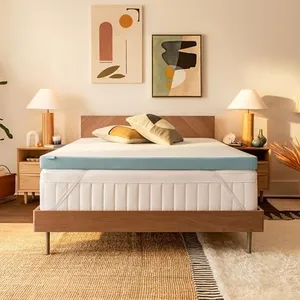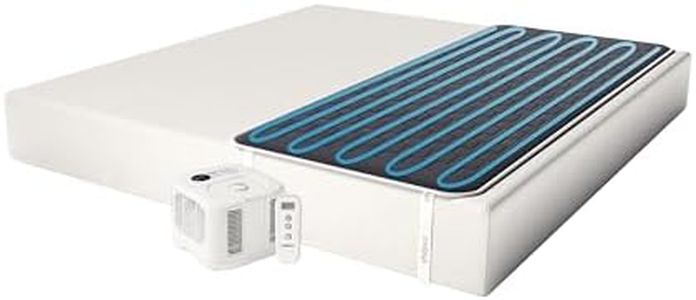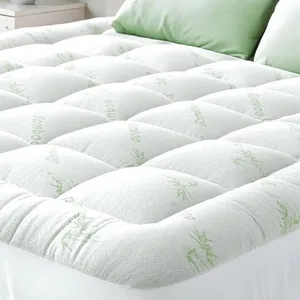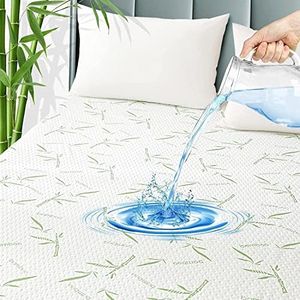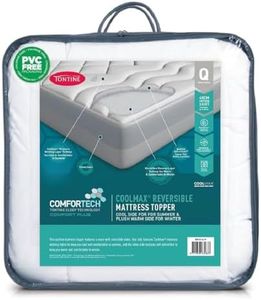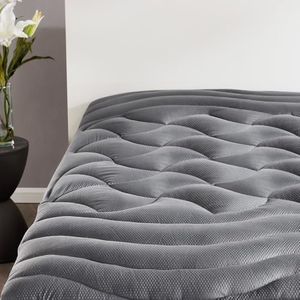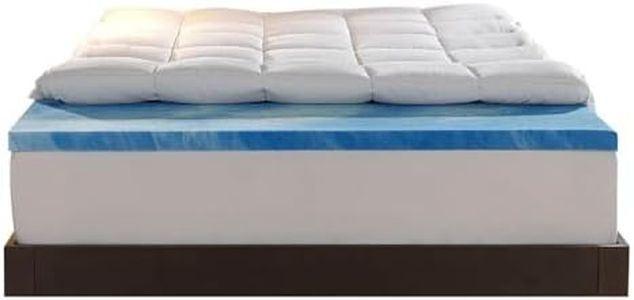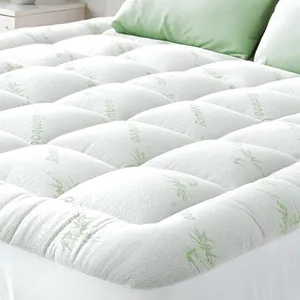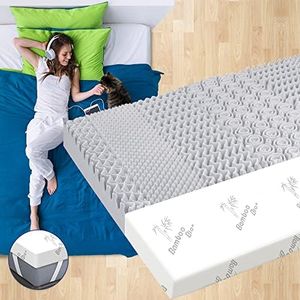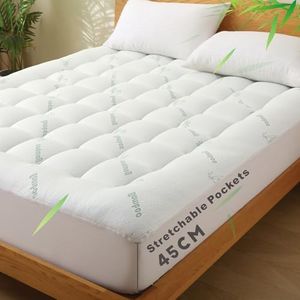We Use CookiesWe use cookies to enhance the security, performance,
functionality and for analytical and promotional activities. By continuing to browse this site you
are agreeing to our privacy policy
10 Best Cooling Bed Pads
From leading brands and best sellers available on the web.Buying Guide for the Best Cooling Bed Pads
Choosing the best cooling bed pad can make a real difference in your sleep quality, especially if you tend to sleep hot or live in a warm climate. When picking a cooling bed pad, it's important to understand the different features that separate one option from another, so you end up with something that fits your needs and personal comfort preferences. Start by thinking about your own sleep habits—like whether you tend to get warm at night, have sensitive skin, or prefer a certain kind of sleeping surface. Knowing these details will help you decide which features will make the biggest impact for you.Cooling TechnologyCooling technology refers to the method the pad uses to keep you cool, and it's crucial because it directly affects how well the pad can regulate your temperature. There are several types: some pads use breathable materials or moisture-wicking fabrics, others have gel-infused layers, and some use active cooling like water or air-powered systems. Breathable or moisture-wicking pads are good for mild heat and light night sweats, while gel-infused ones offer a cool-to-the-touch feel for moderate overheating. Active cooling pads work best for those who experience significant night sweats or need precise temperature control. Choose a technology based on how much cooling you need and whether you prefer a passive or more high-tech solution.
Material TypeThe material of a cooling bed pad impacts comfort, breathability, and durability. Common materials include cotton, bamboo, polyester, and memory foam—sometimes with gel infusions. Natural materials like cotton and bamboo are soft and highly breathable, which is great if you want a cooler, fresher sleep surface. Memory foam offers great support but can trap heat unless it’s infused with cooling gel. If you have allergies or sensitive skin, hypoallergenic materials or natural fibers are a better choice. Pick a material that feels good to you and matches your cooling and comfort needs.
Thickness and LoftThickness, sometimes called loft, refers to how high or cushy the pad feels. A thicker pad adds more cushioning and can make a firm mattress feel softer, but it may also reduce the effectiveness of some cooling features, especially in foam pads. Thinner pads generally focus more on breathability and keeping you cool without changing how your mattress feels. If you just want additional cooling, go for a lower loft. If you want both cooling and a softer sleep surface, a thicker pad may be more suitable.
Fit and Attachment StyleFit and attachment describe how the pad stays in place on your mattress. Options include fitted-skirt styles, anchor bands, or simple lay-flat designs. Secure attachment is important for restless sleepers or thicker mattresses, as it prevents the pad from bunching up or shifting. If you move a lot during sleep or have a deep mattress, look for pads with deep pocket skirts that wrap securely around the edges. If ease of use is your priority and your mattress is standard size, simple lay-flat pads might work just fine.
Ease of CleaningEase of cleaning tells you how simple it is to keep the pad fresh and hygienic. Some pads are machine washable, while others require spot cleaning or special care. Machine-washable pads are best if you value convenience and want to wash your bedding frequently. If you have allergies or spill concerns, easy washing is especially important. Always check the care instructions before buying, and choose a pad that fits your lifestyle in terms of how much maintenance you’re willing to do.
